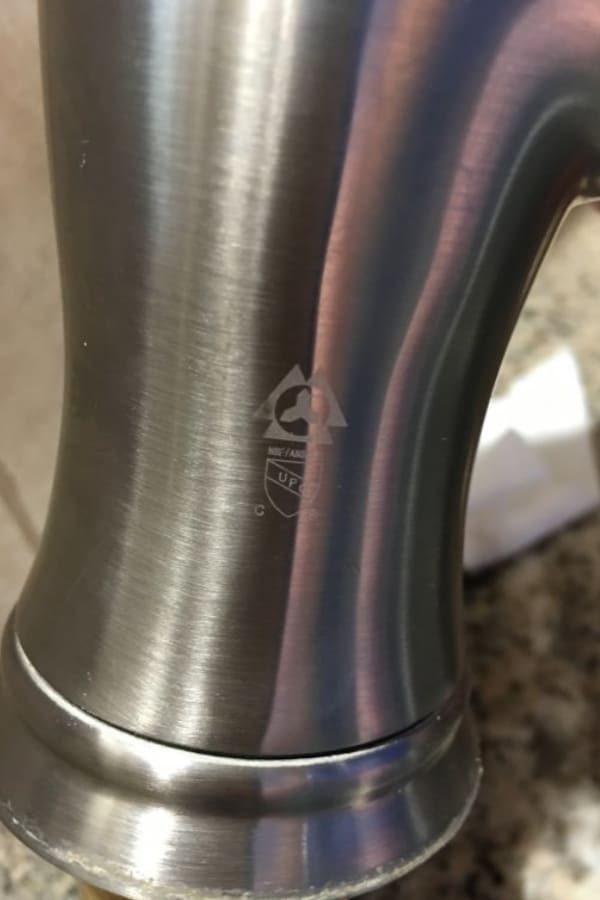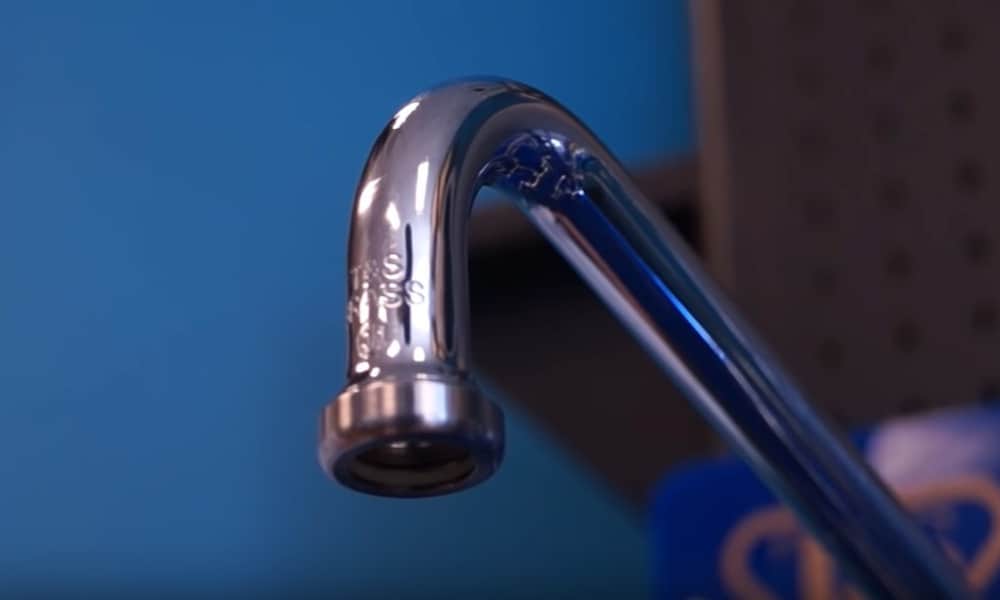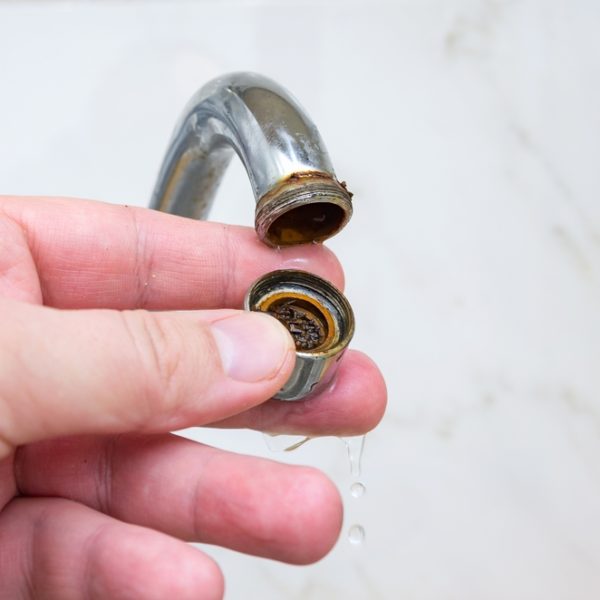Faucets can be expensive items, and if the one in your kitchen breaks, you may decide you would rather replace the failed part rather than spend money replacing the whole thing. In this case, you will need to know the brand to obtain the necessary part.
Sometimes, establishing the brand of a kitchen faucet can be very simple, but unfortunately, this is not always the case. There are a number of techniques you can use to find the information you require, so here’s a guide to how to identify the brand of a kitchen faucet.
If you want a preview of some of the stuff we’re going to be talking about – as well as a few tips on fixing leaks – check out this video before reading on.
General guidelines
As we will see, there are some techniques that allow you to identify the brand of a kitchen faucet quickly and easily – and with no room for doubt. However, other techniques can only help narrow down the options.
If you want to buy replacement parts, you will need to know the brand, the stem length, the spline shape and the number of teeth.
Once you have established the brand you are looking for, it is best to take the old stem with you when you go to the store to check that everything fits together correctly.
With any faucet, whether it’s a pull-out kitchen faucet, or commercial kitchen faucet, or touchless kitchen faucet or any other kind, the techniques for identifying the brand will be similar. Let’s look at how to do it now.
1. Find the logo
The first and easiest way to find out the brand of your kitchen faucet will be if you can locate the logo somewhere on it.
The logo might be large and obvious, or it might be small and unobtrusive. If you can’t see an obvious one, try cleaning it first. If it is slightly dirty, the logo might be hidden.
Also, you might try shining a flashlight on it to help you see more clearly. Places you should look include on the body of the faucet, on the escutcheon and on the spout. Look carefully because sometimes the logo can be very small.
2. Find a model number
Even when there is no brand logo printed or etched on the faucet, sometimes you will be able to find a model number. As with looking for a logo, it will help if you clean the faucet first, and using a flashlight will also give you a better chance of spotting anything.
Check in all the same places as with the logo. If there is a model number, it is likely to be hidden somewhere you wouldn’t normally see it, so check the back of the spout, on the escutcheon and so on.
If you manage to find a number, try entering it in a search engine online. This may take you to the manufacturer’s homepage.
3. Count the splines on the broach and measure the stem
The broach is the part at the top of the stem that fits into the bottom of the handle, and the splines are the grooves in the broach. Since different manufacturers use different numbers of splines on their broaches, this can be a good indicator of the brand of your faucet.
To access it, you will need to pop off the decorative cap, unscrew the faucet handle and remove it.
To count the splines, mark one with a marker pen and count from there until you reach the one you marked again.
You can also measure the stem since the length of the stem can also help you identify the brand. Here are some common spline and broach combinations:
- 4-point square broach – Milwaukee, Royal Brass, Speakman, Sterling, American standard, Chicago, Concinnity, Gerber, Price Pfister, Symmons, Zurn
- 8-point broach – Briggs
- 12-point 0.335″ broach – Crane Dialeze, Michigan Brass, Wolverine.
- 12-point 0.375″ broach – Arrowhead, Artistic Brass, Harcraft, Glauber, Price Pfister, Scoville, Universal Brass.
- 12-point 0.39″ broach – Bradley, Elkay, Fisher, Sears, Universal Rundle.
- 12-point 0.415″ broach – Symmons.
- 12-point 0.485″ broach – Crane, Symmons.
- 15-point broach – Santec, Savoy, Wolverine.
- 16-point 0.360″ broach – Gerber, Sayco.
- 16-point 0.370″ broach – Acme, American Standard Cadet & Colony, Barnes, Burlington, Central Brass, Concinnity, Eljer, Glauber, Harden, Kohler Trand, Milwaukee, Newport, Phylrich, Royal Brass, Scoville.
- 16-point 0.40″ broach – Sterling.
- 17-point broach – American Brass, Mansfield, Midcor, Phoenix, Streamway.
- 18-point broach – Briggs, Indiana Brass, Union Brass.
- 20-point 0.285″ broach – Broadway, Concinnity, Danfoss, Dornbracht, Eljer, Grohe, Jado, Kohler, Milwaukee, Paul.
- 20-point 0.415″ broach – Broadway, Speakman, T & S Brass.
- 22-point 0.375″ broach – American Standard old 3/8″.
- 22-point 0.438″ broach – American Standard current 7/16″.
- 38-point broach – Import, Pegasus, Glacier Bay.
4. Distinguishing features
Faucets from some brands also have some distinguishing features you can look out for to help you determine the brand of your model.
Delta faucets have a distinctive D-shaped broach, so this can indicate a faucet from this brand. Moen and Mixet faucets have an oval-shaped broach, so this shape may indicate one of these brands.
Faucets from T&S have bulges on the stem where it meets the handle, so if your faucet has this feature, you may suspect you have a model from this brand.
5. Use a broach gauge
A broach gauge is a tool that allows you to determine the brand of a faucet quickly and easily, and this is the method preferred by professionals.
You simply insert the Faucet Stem into the female ends or the Faucet Handle onto the male ends of the broach gauge until you find a match. Then, using a key that comes with the gauge, you can identify the brand of the faucet you are dealing with.
Several ways to identify the brand
As we have seen, there are several ways to identify the brand of your faucet. If you are lucky, you will be able to find the logo on the faucet, allowing you to establish which brand you have quickly and with no doubt.
However, if there is no logo, you can use some of the other techniques we have talked about to narrow down the possibilities to only one or two brands.












